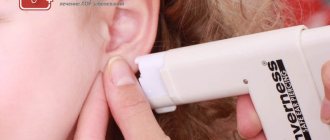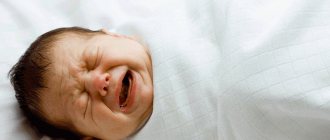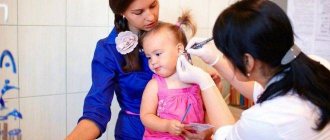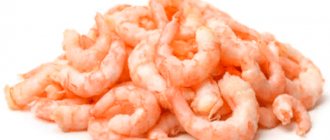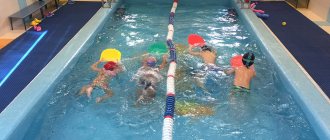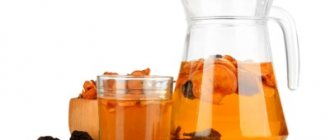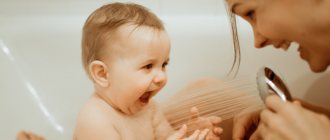Steps
Handle pierced ears with care
Do not remove the first earrings until your ears have healed.
When you got your ears pierced, the piercer inserted earrings into your ears. These earrings are made from hypoallergenic materials and were designed specifically to be worn in recently pierced ears. If you remove these earrings, the holes may close or heal incorrectly.
- If you have your earlobes pierced, you can usually remove the earrings after six weeks.
- If you have a cartilage piercing, healing will take eight to twelve weeks.
Don't touch your ears often.
This may lead to infection. Do not touch them unless you are cleaning them. Before touching your ears, wash your hands with antibacterial soap.
Be careful of things that your earrings might get caught on.
Wear hats, scarves and other items carefully. Avoid items that will put pressure on your ears, such as headphones or tight hats.
- If you wear a veil, choose a fabric that is difficult to snag. Try to wear a loose veil and wash it as often as possible.
- Be careful when changing clothes, especially if you are using material that earrings can easily get caught on.
Do not allow other substances to come into contact with your ears.
Avoid contact with shampoo, conditioner and other hair products, as their ingredients can cause infection.
- You can place plastic bags over your ears to protect them while you shower.
- Do not swim in the pool with newly pierced ears unless you have covered them with something waterproof. Try to keep your head above the surface of the water.
Try to sleep on your back.
Sleeping on your side can irritate the openings and is also painful.
- If you have trouble sleeping on your back, use a clean pillowcase every night. Bacteria from your pillowcase can get into your ears and cause an infection.
- You can also cover your pillow with a T-shirt to prevent infection and change it to a clean one every night.
Clean pierced ears
Wash your hands with disinfectant soap. This is an important step because you can easily transfer bacteria to your ears with your fingers. Hands should be clean every time you touch your ears. Dip a cotton swab or Q-tip into the cleaning solution. Use a salt-based solution that your piercer recommends, or any other solution designed to treat piercings.
Do not use alcohol, hydrogen peroxide, or antibacterial ointments. They contain ingredients that prevent skin cells from repairing and healing. As an alternative to cleanser, you can use a sea salt solution. Dissolve 1/8 teaspoon salt in a glass of water. Do not use table salt that contains iodide.
Wipe the hole with a cotton swab or cotton swab soaked in the solution. Wipe both sides of the hole until it is completely covered with the cleaning solution. Rotate the earring. Gently twist the earring two or three times to get the antiseptic inside the hole. This also prevents the healing from being too tight. Use a new cotton swab or Q-tip for the other side. Throw away the cotton swab you used to clean the first ear and get a new one for the second ear.
Clean your ears three times a day. Don't skip cleaning, especially during the first few weeks after getting your ears pierced.
This is important because dirt and dust from the air, in addition to natural substances produced by the ears, can cause irritation and lead to infection.
Clean your ears after taking a bath or shower if shampoo or conditioner gets on your piercing. Clean your ears after swimming or sweating during outdoor activities.
If a family decides that a child needs to have his ears pierced, then the question will certainly arise as to what is the best way to do this. Ear piercing with a “pistol” is considered one of the most painless and fastest. We will talk about what the procedure is and what to expect for parents and children who decide to resort to it in this material.
How to treat ears
- Starting from the second day after visiting the salon, earrings should be carefully rotated with clean hands. It is not recommended to remove a product installed by a specialist, as this leads to the appearance of microcracks, which means it increases the healing time.
- Treatment after puncture care is carried out in the morning and evening. It is better to use hydrogen peroxide as a disinfectant. Being the simplest option, the composition allows you to smear and rinse the wound, achieving deep treatment in just a few gentle movements. Sometimes salons recommend treating ears with alcohol, but this option is unacceptable for a small child, because upon contact with the puncture site, the substance can cause discomfort and pain.
- It is important to ensure that your earlobes always remain clean after piercing. After water procedures or contact with dirt, experts advise additionally wiping the ears at the puncture sites with chlorhexidine. Often parents are concerned about the question of whether it is possible to wash their hair in the first days? The answer is negative. If possible, it is recommended to avoid contact of the puncture sites with detergents and water during the first week.
- A month after installation, medical nails must be removed and treated with a disinfectant. Treatment of the ears after this is also performed with hydrogen peroxide. The procedure must be repeated after a few hours, and this should be done even if healing is good.
Interestingly, pierced ears today do not require as much attention during the healing period as before. All stages of wound care can be reduced to one procedure. This can be done by choosing medical glue for treatment, which is applied directly to the open wound immediately after the procedure. The substance prevents the penetration of bacteria into the injured area, and disappears as the earlobe heals.
About children's piercings
There is no consensus among doctors regarding ear piercing in childhood. There are many competent and not very competent opinions, judgments and hypotheses. Most pediatricians are inclined to believe that piercing the baby’s earlobes will not cause much harm if there are no obvious contraindications. These include diseases of the heart and hematopoietic system, mental illnesses and epilepsy, diabetes, skin problems, allergic reactions, hearing and vision problems and immunodeficiency conditions.
Dermatologists warn about the possibility of developing an allergic contact reaction to metals contained in jewelry alloys. And reflexologists say that ear piercing can cause irreparable harm to the baby’s health, because the most important nerve active points that regulate the activity of many internal organs are concentrated in the earlobes.
There is no consensus on the age at which a child’s ears should be pierced. Parents independently determine when to do this. Most doctors say that it is better not to touch the ears until the age of three due to the child’s weak immune system, and due to the fact that due to the child’s early age it will be difficult not to injure his earlobes by accidentally touching jewelry.
The only thing that all doctors agree on is the answer to the question whether it is possible to pierce ears at home. This should not be done under any circumstances, since piercing is a minor surgical intervention, and any such intervention must be carried out under sterile conditions so as not to infect the child and avoid complications.
There is a wide choice of methods for piercing ears in offices and beauty clinics. These include traditional punctures with needles, and more bloodless and painless, and most importantly, quick methods - punctures with a “gun” and the American disposable device “System 75”. There is no point in piercing a child’s ears at home with a gypsy needle dipped in vodka, with the risk of infecting the wounds, as was done several decades ago.
Modern methods are less traumatic, since the stud earring, made of a special medical alloy, also acts as a needle during the piercing process. Thus, the earring instantly appears in the ear and is automatically fastened. Care is much more difficult and longer, which is a prerequisite for a successful outcome of the whole undertaking.
Possible complications
There are usually no negative consequences when a child’s ears are pierced if the mother did everything responsibly and correctly - she took her daughter to a good licensed clinic, the punctures were done in sterile conditions with sterile instruments, and the subsequent care was correct and thorough. However, even with proper care, a child’s ears sometimes fester after a piercing. This indicates that the wound has become infected . A small amount of pus that is released during treatment or during movement of the earring in the ear should not cause serious concern. It is enough to additionally lubricate such a wound several times with Levomekol or Baneocin ointment.
If the ears are very festered, the earlobes look very swollen and are painful on palpation, if the skin has changed color and has become purple or grayish, you should definitely show the child to a doctor. The temperature after ear piercing sometimes rises, as people say, “due to nervousness.” But if the rise in temperature did not occur immediately upon returning from the cosmetologist’s office, but a few days later, against the background of suppuration, then this also indicates either the addition of a bacterial infection , or that the child’s body “does not accept” a foreign body , and the immune system is doing its best rejects earrings.
If the ear is inflamed and red, but there is no pus, this may indicate a possible allergic reaction to some component of the alloy from which the jewelry is made. Ignoring the contraindications that exist for piercing can lead to complications from a vulnerable organ or body system. If the child suffered from otitis media before the manipulation, and the parents still decided to pierce his ears, then deterioration in the hearing organs is possible. The wounds do not heal for a long time and can become very inflamed in children with diabetes mellitus and diseases of the cardiovascular system.
Ophthalmologists say that an incorrectly chosen puncture point, if it is shifted down towards the cheeks, can lead to decreased vision and even the development of glaucoma.
The likelihood of complications is also affected by the time of year. In the summer heat, the child sweats more, it is dusty outside, which increases the likelihood of suppuration and inflammation. In winter, another problem awaits the baby - the effect of cold on pierced ears also does not have the best effect on the healing of the wound. In addition, during the cold season, children wear hats, scarves and sweaters; mechanical injury to the ear is possible if the earring gets caught on clothing.
It is best if the rehabilitation process after piercing falls in May or September.
Care after a piercing
After a second procedure, a fairly long and systematic care for pierced ears will follow:
Is it possible to swim? Bathing a child, washing his hair, or taking him to a bathhouse is prohibited for the first 5 days after the puncture.
When washing your face, it is important to ensure that water does not get on fresh wounds. How to groom a child? It is very important that the medical “studs” inserted into the ears do not cling to the hair, and therefore it is better to do high hairstyles in which the hair will not come into contact with the ears. When combing, it is important not to touch the earrings with the comb. Is it possible to swim and use the pool? Swimming in the pool is prohibited for 2-3 weeks
Open bodies of water - seas, rivers, lakes - should be avoided for at least a month after piercing.
Is it possible to play sports? Active games and physical activity are not recommended for at least 7-10 days after the piercing procedure. Increased sweating, which occurs during physical stress, can intensify the inflammatory process in the earlobes. How to process correctly? Wounds after piercing should be treated at least 3 times a day. To do this, it is optimal to use hydrogen peroxide 3%, Miramistin. It is prohibited to use alcohol, vodka or other alcohol-containing liquids for processing. Proper treatment involves not only instilling an antiseptic, but also rolling the earring in the traumatic canal so that it heals faster
This must be done very carefully, around its axis.
You can make ear piercing safer and wound healing faster if you take into account several important nuances:
Child's age. There are no clear recommendations on what age you can get your ears pierced, however, most doctors tend to call the optimal age 3 years. An earlier puncture is fraught with complications and inflammation, since local immunity in children is not sufficiently developed. In addition, the baby, not understanding the seriousness of the incident, can touch the ears, pull the “studs”; if the jewelry falls out, the child can swallow it or inhale it. After 12 years, a girl may encounter another problem - too slow wound healing, since during puberty, against the background of hormonal changes, blood clotting and the body's regenerative abilities change.
- Right moment.
The best times for ear piercing are spring (late April and May) and autumn (September). During these months, the child does not wear hats or scarves, which can get caught and damage the ear, and there is not as much dust and sweat as on hot summer days. - Earring material. You should carefully study what material the earrings for your child are made of.
The alloy should not contain nickel. This metal causes severe allergic reactions.
How to care for your baby's pierced ears
Proper care of pierced ears and proper healing requires time and compliance with the instructions of a specialist. Ignoring this condition can lead to a number of unpleasant consequences, including:
- inflammatory process at the puncture site;
- healing of the wound;
- scar formation;
- child's discomfort.
Is it possible to avoid consequences by following the rules on how to care for your ears after being pierced with a gun or catheter? Yes. Only by strictly following the recommendations will you significantly reduce the risk of complications, and will have the opportunity to decorate the girl’s ears with beautiful earrings within a month or a month and a half after going to the salon.
Choosing earrings for a child
| Decoration Options | When piercing | After the wound has healed |
| Material | Initially, it is better to put earrings made of special medical steel, titanium compounds or bioflex into children’s ears. All these materials are hypoallergenic. | Once the wounds have healed, you can purchase silver or gold earrings. |
| You should not wear them at the time of piercing, since gold contains allergic impurities, and silver oxidizes. | ||
| Form | There are many varieties of earrings for babies. But for the first time it is better to stick to standard small carnations. But the shape of their “head” can be varied: hearts, triangles, balls, etc. | |
| Surface Features | Earrings must be absolutely smooth, the surface without various protrusions, burrs and sharp parts that could scratch the child's skin. | |
| Presence of stones | Small, neat stones (not diamonds, of course, for the safety of the baby) are quite acceptable, especially when it comes to older children. Earrings without stones are also suitable for infants. | |
| Lock type | The ideal option is the same nails with a convenient clasp that a child cannot open on his own or damage. | After healing, you can put on earrings with an English lock that does not squeeze the earlobe. It is also difficult to open with children's hands. |
| Weight | The earrings should be light, otherwise the baby will feel heavy and uncomfortable on her own ears. Naturally, we are not talking about comfortable wearing. |
What metal should earrings be made of?
You should be very careful when purchasing earrings for children; not every material is suitable as your first earrings. It is better to give preference to earrings made of quality materials.
The most popular are earrings made of gold; the higher the standard, the fewer impurities there will be in the product, the safer the earrings will be. But gold with a low purity is highly durable, such earrings should be worn as soon as the wounds have healed.
The ideal option would be earrings made of medical steel; this material is processed with a vacuum, due to which it is safe and never causes irritation, inflammation or allergic reactions.
Earrings made of titanium are also characterized by safety, they are hypoallergenic, do not cause complications after a puncture, and the cost of titanium products is low.
Platinum is an expensive material, but it is good for sensitive ears.
Modern craftsmen often suggest using plastic jewelry for the initial stage. But the material must be of the highest quality, plastic earrings can be of different shapes and colors, children really like these earrings.
Earrings made of aluminum, copper, and tungsten will not harm your health. But it is better to avoid cobalt - it contains nickel, the material does not promote rapid healing.
Children's ears require special care after piercing. After the procedure, daily treatment will be required. If safety precautions are followed properly, the wound is cared for correctly, there will be no complications, and healing will occur very quickly.
How to pierce with a needle
If medical services of this kind are not suitable, then ear piercing can be performed at home. To do this, you can purchase a special Studex gun, which is used in salons, or buy a catheter of a suitable size at the nearest pharmacy.
Catheters
As a standard, they come in 6, 8, 12, 13, 14, 16, 18, 20 mm. Naturally, the size of the hole must correspond to the diameter of the decoration.
Piercing punches
Specialized piercing stores also sell professional needles. They are made from an alloy of steel and titanium. Like catheters, they are classified by size (1; 1.1; 1.2, etc.).
Drawing of types of ear piercings
How to perform ear cartilage puncture at home:
A place is planned on the ear
To do this, you can use a regular alcohol-based felt-tip pen; It is very important to thoroughly clean your hands and ears. For disinfection purposes, you can use Chlorhexidine or pure alcohol.
If you don’t have either one or the other at hand, then use vodka or other strong alcohol (more than 40%); The hole is made on the outside of the cartilage so that its location can be seen. The auricle is stretched and manipulation is performed. Blood may appear at the site of the hole - don’t worry, everything is normal, in the cartilage, like in other parts of the body, there are small vessels and capillaries. You just touched one of them; While the needle is in the ear, you need to insert an earring in its place. We recommend using a nail - it is easiest to install in a fresh hole. The hole is washed with “Chlorhexidine”, “Miramistin” or alcohol, the needle begins to be carefully pulled out of it, and the earring, on the contrary, is inserted; To make the stud fit inside the puncture easier, you can apply any regenerating ointment to its tip.
The technique may vary depending on the type chosen, but in general, the system is the same. At first, ichor will appear around the earring - it must be washed off with Chlorhexidine all the time. Do not use peroxide under any circumstances, otherwise you will delay the healing process for many months.
Chlorhexidine
Earring material for better healing
This article talks about typical ways to solve your issues, but each case is unique! If you want to find out from me how to solve your particular problem, ask your question. It's fast and free
!
After the ears are pierced with a gun, special stud earrings are inserted. They are made of titanium or Teflon:
- titanium is a physiologically inert metal, it does not react with body fluids, does not oxidize, so there is no allergy to it;
- Teflon is superior in chemical resistance to all synthetic materials and noble metals - even nitric and hydrochloric acid does not destroy it.
To avoid allergic reactions during wound healing, choose these materials. When the ear is completely healed, try changing the jewelry by treating it with a disinfectant.
Carefully monitor the condition of the lobe - an unfavorable reaction can also occur to the noble metal.
Caring for your ears after a gun piercing
Not everyone gets their ears pierced at a tender age. Sometimes, in a conscious state, you want minor changes. And new jewelry will definitely lift your spirits. Having pierced your ears, you need to know how to care for your ears after getting pierced with a gun. The rules are simple and uncomplicated, but mandatory.
Process
The ear is pierced with a special gun. Often a stud earring is used during a puncture; it must be sterile. For the procedure, contact special cosmetology or dermatology offices.
Thanks to this, your earring will be located exactly in the center of the earlobe, and you will not be in danger of infection (ask a specialist to open and treat the instruments with an antiseptic in front of you). He will also provide detailed advice on how to care for your ears after a gun piercing.
All that is required of you is clear and strict execution, and then there will be no problems either now or in the future.
First day
The process of complete healing generally lasts for a month. Therefore, during this period it is worth giving up all your diligence on caring for your ears in order to subsequently avoid swelling, suppuration and swelling. What is necessary on the first day after ear piercing?
- The earlobe should be treated with an antiseptic in the morning and evening, as well as every time you touch it with your hands. Buy an antiseptic in the form of a spray - it is convenient and economical to use.
- To avoid complications, doctors advise using an antiseptic after walking outside, after taking a bath or shower, and especially after swimming in the pool.
- Rotate the earring around its axis twice a day. Wash your hands thoroughly with soap first to avoid infection.
- Avoid saunas and steam baths not only on the first, second and third days. It is better if you “forget” about them for one or two months - until complete healing.
Second day
The first day went smoothly, and you learned some principles. Do not be alarmed if the swelling has not subsided (at least weakly). Repeat the same steps as indicated for the process of caring for your ears after piercing with a gun. What else can you add here?
- Earrings used for puncture must be made of medical alloy, gold or silver. On the first day, both on the second and on the third, they cannot be removed. They should remain in the ears for four weeks, after which the canal will heal, after another month of preventative wearing of earrings, you can choose any earrings to your taste.
- On the second day, stagnation may appear in the canal if you do not rotate the earrings. Additionally, move back and forth (without removing the fastener) - this is good practice against compaction and congestion.
- Do not use alcohol for disinfection. It can injure the delicate skin of the ear and cause severe burning and unpleasant itching. It is not advisable to play sports, but if you cannot live without it, double the dose of antiseptic. Treat the lobe before and after class.
- Maintain good hand hygiene and remember to wash them with soap before each manipulation of your ears.
The third day
- All of the above actions are performed not only on the first, second and third days after ear piercing, but also within two weeks.
- Medical glue has been released for lazy people. It quickly and effectively heals wounds, additionally working as an antiseptic. The wound heals quickly due to the fact that it contains an insulating substance - a film forms on the surface of the earlobe. It prevents bacteria and germs from reaching the wound. This remedy is effective for healing in little girls. After all, daily treatment of the ears can cause protest and indignation in a child.
- Inflammation can appear not only on the first and second days, but also on the third and subsequent days. Since earrings cannot be removed for two months after a puncture, treat the wound with an antiseptic, additionally adding hydrogen peroxide. If more than one or two months have passed, do not forget to treat the earrings with alcohol or the same antiseptic (recommended not only for those who have problems with inflammation and suppuration, but also as a preventive measure).
- It is not recommended to wash your hair. Therefore, wash yourself thoroughly before the puncture procedure. Or carefully cover the lobe from water getting into it, for example, by sealing it with a wide plaster.
Age is not a barrier
According to doctors, punctures should not be done before the age of 3. The cartilage structure is actively developing at this age and its disruption is extremely undesirable. But salon specialists are happy to take on work that takes 6 months to complete.
A one-year-old baby will immediately forget about the holes in her ears and will not fuss with them in vain. But an understanding girl, due to her curiosity, will soon break the rules of care, which will increase the risk of infection with bacteria and suppuration of the canal. Therefore, mothers need to know how to care for pierced ears.
Parents who pierced their daughters at an early age do not regret it. They say the sooner the better. At school age, even if it is 1st grade, the child develops a feeling of fear. For little ones, this feeling is weakly manifested, because they do not yet understand what is happening.
How to properly care for pierced ears
The decision has been made - we go to the doctor for examination. This is a prerequisite if you want to keep your baby healthy.
Which doctors should I go to:
- dermatologist;
- otolaryngologist;
- ophthalmologist
First, get your eyesight checked. If there are problems, you need to postpone going to the salon until you have completely recovered.
An ENT specialist will check the ears, and a dermatologist will check the condition of the skin. It's even better to undergo a full medical examination.
After the inspection, carefully select a professional. Read reviews about the salon or consult with friends - who pierced their ears, where, and whether there were any unpleasant consequences.
Find out from the salon worker what they use to pierce your ears. Choose those establishments where the procedure is carried out using silent disposable pistols. Reusable devices undergo weak disinfection, which greatly increases the risk of infection.
Do not pierce your ears at home; self-taught people without a diploma will not be held accountable for the consequences. If your ears are pierced crookedly, correcting the mistake is difficult and only experts can do it.
Contraindications for piercing
There are diseases for which this action is strictly prohibited. It can cause further health problems to develop.
Ask your doctor for permission if you have the following illnesses:
- rheumatism;
- chronic ear diseases;
- eczema;
- severe allergies;
- cystic acne;
- neurological disorders;
- diabetes;
- blood diseases;
- traumatic brain injuries.
Only with the permission of a doctor go to a beauty salon. Such diseases are truly dangerous. For example, with diabetes, wounds and cuts take a long time to heal, during which time bacteria will freely penetrate the canals and cause more serious consequences. And if you have a blood disease, you should not wear earrings at all - the metal releases trace elements and they enter the blood. We warn you again - check your health.
How to Care for Gun-Punctured Ears
The job is done, now mothers face a crucial moment - treatment and proper care. When piercing with a gun, the earring is inserted immediately. It is made of medical alloy, does not oxidize and does not rust - this is a plus.
These earrings should not be changed until the wound has completely healed. New jewelry must be gold. It’s better if these are carnations - they are small, neat and do not cling to clothes. You can remove the earrings after a month and replace them with ones of your choice.
You cannot wash your hair or wet the canal with water for 5 days.
For a month, cancel trips to the bathhouse, swimming pool and other public water procedures. The girl's head and bedding must be clean.
The tradition of piercing the ears of little girls does not lose its relevance from generation to generation. And questions about what to do after a piercing and what earrings to choose at an early age still occupy the minds of parents who decide to undergo the procedure. Graceful jewelry in small ears is an undoubted symbol of femininity and sophistication. However, you can achieve the desired effect without the risk of complications only by entrusting the procedure to a specialist in the salon, and also by learning how to treat the ears after a child has been pierced with a gun or needle. What threatens otherwise? Are the rules for caring for a piercing different for adults and children? How to properly treat ears after piercing? Let's figure it out.
What is better to pierce a child's ears: a gun or a needle?
Table No. 1. What is the best way to pierce children's ears: comparison of tools in the table
| Type of ear piercing instrument | Features of the procedure | Advantages/disadvantages |
| Medical classic (reusable) gun | Before each new piercing, the instrument is disinfected. The ear must also be treated. In front of the parents, sterile new stud earrings chosen by them are inserted into the gun. The shank of the earring simultaneously functions as a needle. In a matter of seconds, the earring makes a hole in the ear, ends up there and automatically closes. | Allows you to quickly and practically painlessly pierce a child’s ear. The process of piercing and placing the earring in the ear occurs simultaneously. Only special medical nails are inserted that do not cause allergies. But still, using a reusable pistol (even with sterilization) does not exclude the possibility of infection. When punctured, the device produces a sound that can frighten a child. Because of this, the baby may no longer allow the second ear to be touched. Relatively small selection of stud earrings. |
| Special needles | Manually piercing a child's ear using a catheter needle. | The needle is selected taking into account the size of the earlobe. After the piercing, you can insert any earrings, not just medical studs. However, the sight of a needle begins to evoke fear on a subconscious level. Piercing with a needle takes quite a long time. And the procedure is painful, so this method is not recommended for children. |
| Disposable piercing gun SYSTEM-75 | A disposable ear piercing cartridge with two needle earrings is inserted into the reusable instrument. The gun is brought to the ear with a sterile disposable cartridge and a puncture is made. The earring ends up in the ear in a closed state. | There is no noise when piercing, a quick procedure. Everything is sterile: the earring and clasp do not touch the reusable part of the gun. A special thin needle eliminates pain. Needle earrings are made from medical hypoallergenic steel, titanium, and bioflex, which helps avoid allergic reactions. There are practically no shortcomings. The selection of first earrings is limited to earrings made specifically for this equipment. |
How should earlobes heal and what to do if something goes wrong?
With a normal puncture, correct selection of earrings and regular proper care, healing should proceed as follows:
- In the first two to three days, bleeding from the open wound should stop, and during the same period the pain of the puncture should disappear.
- During the first two to three weeks, there may be a slight discharge from the earlobe—transparent ichor or a small amount of whitish “dirt” that sticks to the stud pin.
- Pus should not appear at all - neither white, nor green, nor black!
- After two to three weeks, the ear should look the same as if the piercing was done a long time ago. However, de facto, the channel has not yet fully formed, so the earring cannot be removed.
What could go wrong? For example, you notice pus, or the earlobe is swollen and hurts, or something like a lump has appeared in it, or blood or ichor has appeared when, in theory, there shouldn’t have been any. What to do, what to process? First, contact the piercer who had the piercing done, or any experienced piercer who has reason to trust - let him look and advise what to lubricate next, whether or not to remove the earring. In severe cases (severe inflammation, obvious infection), consult a surgeon. If you simply notice that healing is slower than in most described cases, perhaps this is your individual characteristic, and after a piercing a child’s or adult’s ear needs to be treated longer than recommended in general.
Ear piercing
Let's start with why you shouldn't do the procedure yourself, but rather pierce your ears with a gun. There is only one reason not to go to the salon - you are still too young, and your parents do not allow you to make a hole. So you decided to spite everyone, ask a friend or do everything yourself. In all other cases, any sane person will go to a professional.
Otherwise, you may harm yourself:
- make a hole in the wrong place. The lobe is large, you need to have experience and a steady hand to make the tunnel in the center, at the right height. Very often, especially if you do it yourself, your hand trembles, or you are afraid of pain and make a hole in the wrong place. Too low, too high, too sideways, etc. After this, you get very upset, read how long it takes for your ears to heal after a piercing, wait for it to completely heal and try to make a hole in the right place;
- Beginners simply don’t know how to treat their ears after a piercing. They have a general understanding of the methods of processing tools, earrings, leather, and so on. The risk of infection after work by a non-professional is incredibly high. Your parents will be furious if it turns out that you disobeyed them, and they will also need to take you to the surgeon;
- Let's say that children should only have their ears pierced in a doctor's office; there's no need to explain anything here - it's an axiom. Opinions vary regarding age, but the average recommended age is about 3 years. Until 9-10 months, you shouldn’t even think about it. Wait!;
- Many people watch online videos about ear piercing and think that they have learned everything about the procedure, but they know nothing about biologically active points, of which there are an incredible variety in the earlobe. Only an acupuncturist knows which place is safe and where to stick the earring. Activation of unwanted points leads to disruptions in the functioning of internal organs and systems. Something starts to go wrong with you chronically, and you don’t even know that this is possible due to inept intervention. And reading about what lunar day it is today will be useless;
- your "home" tool may not be suitable. Craftsmen use pins, gypsy needles, needles from intravenous infusion systems, awls, sharpened earrings and pieces of wire. This is not acceptable in the modern world. Not to mention the fact that it is incredibly painful when they try to get the earring into the tunnel just made with a needle. The ears hurt after the piercing, and they hurt even more during it. The gun immediately makes a hole with a needle;
- often “handicraftsmen” have rotting ears after a piercing and they do not know or are embarrassed to turn to someone for help. If everything was done in a salon, where people go not only to get manicures and pedicures, then the master would be able to monitor the progress of healing and the formation of the correct tunnel. It would be possible to ask him questions of interest and complications would not arise so often.
We hope we have convinced you to go to a beauty salon, an acupuncturist, a cosmetology clinic, a beauty institute, or just an appointment with a surgeon.
In addition, the price for the procedure with a gun is not too high and will not scare you away. It ranges from 10 to 25 dollars with a gun and up to 35 dollars if you want to do everything with a needle. Here are the benefits of modern and professional equipment:
- The price for ear piercing is not high, and there are salons providing this service in every area;
- the operation is lightning fast, you won’t even have time to get scared and realize that everything is already behind you;
- the ear hurts quite a bit, up to 7-10 minutes;
- the puncture is carried out immediately with an earring, which remains in the hole;
- earrings are used special, sterile, in sealed bags with a specified period before which they can be used;
- You can perform all types of ear piercings, and this is working with cartilage, which is much more dangerous and painful than with the earlobe. It’s definitely better not to do this at home, because a pierced eyebrow, for example, can turn into a real nightmare;
- There is almost no blood, the main thing is not to twitch when the master says not to twitch. This way you will reduce the risk of crushing the cartilage or “tearing” the hole;
- If you have already watched the ear piercing video, you might have heard a loud sound. It scares many, but modern models of pistols are devoid of this minor disadvantage - they operate silently;
- The disadvantages of working with such equipment include the inability to completely sterilize the instruments, but professionals find ways to process everything to the safest level possible.
Healing period
Along with the question of how to treat the ears after a piercing, parents are interested in the healing period. The average time for small children is about 20 days before the first products are replaced (without processing interruptions). In cases where the procedure is carried out in winter, the period may increase, and this is due to the wearing of hats and additional outer clothing. In general, ear piercing at an early age does not cause discomfort, but this condition is only true if you carefully care for your ears after the procedure.
"Miramistin" or "Chlorhexidine"
How can you treat your ears after piercing? Miramistin or Chlorhexidine antiseptics are also suitable for wiping the puncture site. With their help, infection of wounds and burns is effectively prevented, in addition, they have a regenerating effect. In the area of skin treated with Miramistin, protective reactions are stimulated, so wounds heal faster. What is the best way to treat your ears after piercing? Of course, Chlorhexidine, since it does not dry out the skin and heals damage well.

